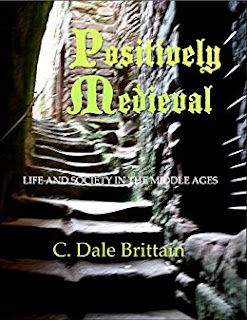In April of 2019, the roof beams of Notre Dame cathedral in Paris caught fire. The flame roared through the 900 year old oak beams that supported the lead roof, sending particles of lead throughout the neighborhood and threatening to collapse the whole structure. As Parisians watched in horror, the nineteenth-century spire that had risen above the crossing crashed down through the church's stone vaulting.
At the time there was fear that it might never be restored or might, like Reims cathedral (bombed in World War I) take decades to repair. President Macron promised it would be rebuilt in time for the 2024 Olympic Games, to be held in Paris. The restoration efforts didn't quite make the Games, but the cathedral has now reopened, just in time for Christmas 2024.
It helped that the church was not nearly as badly damaged as Reims had been. Other than at the crossing, where the spire had come down, the stone vaulting (the ceiling you might call it, with all the oak beams and the roof above it) had mostly survived. The church's interior was damaged by smoke and water but was mostly still there, unlike at Reims, which had been left as a shell after the bombing.
It also helped that a concerted search through Europe's forests (including eastern Europe) was able to find and obtain enough tall oaks to replace the twelfth-century beams. (Many had been planted two centuries ago with the thought that they would become ships' masts, but steam replaced sail before they were used.) In spite of some talk in 2019 of redoing the cathedral with an exciting new 21st-century "look," the decision was made to restore the church more or less to how it had been before the fire. That meant not only using oak beams rather than steel but repairing the stonework (including the vaulting) using medieval techniques.
A major role here was played by craftsmen who had been working on Guédelon Castle. As I've noted before, this is a project where modern people are attempting to build a medieval castle using medieval techniques and finding it more of a challenge than they anticipated. But some medieval techniques they've worked out via trial and error, looking at how real medieval castles are put together, others they've found in late medieval handbooks. At any rate, craftsmen who've developed a good feel for wood and stone played a major role in Notre Dame's reconstruction.
Notre Dame reopened in a grand ceremony attended by international dignitaries. The interior especially looks strikingly different than it did six years ago, being limestone white rather than smoke-stained gray (from centuries both of candle smoke and more recently coal residue from the heating system). One can see why thirteenth-century visitors to Paris were stunned by the cathedral.
But other aspects have been restored to the nineteenth-century standard, including a new spire to replace the one erected by Viollet-le-Duc that crashed through the vaulting, and also including the gargoyles and the rather insipid heads of the queens and kings of the Old Testament, depicted on the front. Some new things have been added, like the sprinkler system (good idea!). But overall one can now enter the church and imagine oneself back in the thirteenth century.
© C. Dale Brittain 2024
For more on churches and other aspects of life in the Middle Ages, see my book, Positively Medieval, available from Amazon and other ebook platforms. Available both as an ebook and in paperback.



